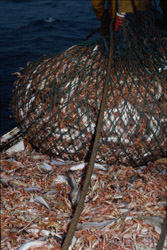Chemical substance affects sexual development in fish
Nonylphenol (NP) and its chemical derivatives (NPP and NPE) are synthetic substances that are widely used in chemical manufacturing, including the production of textile, paints, paper, detergents, cosmetics and agrochemicals. It is estimated that the annual production of NP alone is more than 80,000 tons, solely in Europe. As a result, significant amounts of NP are discharged into waterways, both from industries and sewage treatment plants. Para-nonynphenol or 4-NP is the most common form of NP. This agent is known to affect the endocrine system in several aquatic species. The endocrine system is a complex mechanism that regulates internal communication among cells and organs. This is achieved through the release of hormones, the chemical signals that control vital functions such as growth, embryonic development and reproduction. Even very subtle interventions in the endocrine system may result in severe changes in these functions that can affect the organism itself or the next generations of the species. A recent study has focused on the effect of 4-NP on the reproductive system of three different fish species. It was fount that the exposure of these species to certain concentrations of 4-NP resulted in the suppression of androgen production, thus impeding the development of male gonads. It is expected that chronic exposure to high concentrations of 4-NP may have dramatic effect on the reproductive ability of fish. Further research is required in order to evaluate the impact of this chemical compound on fish population in the wild.







